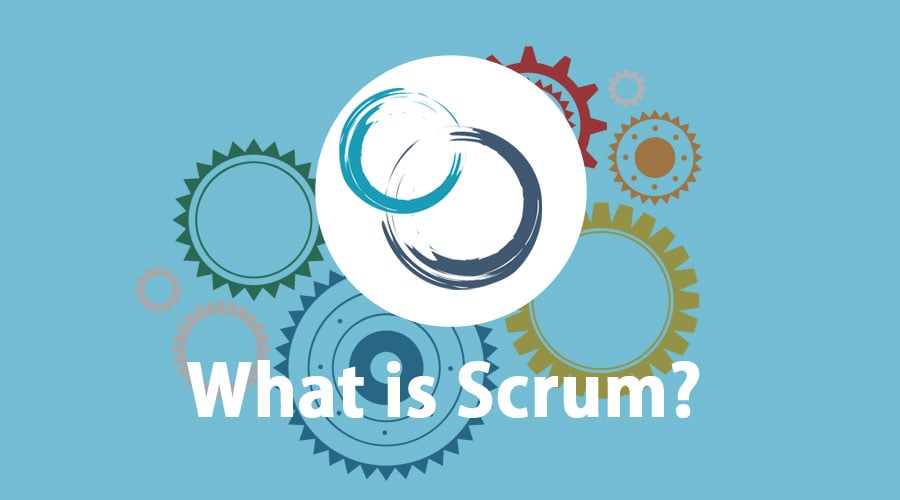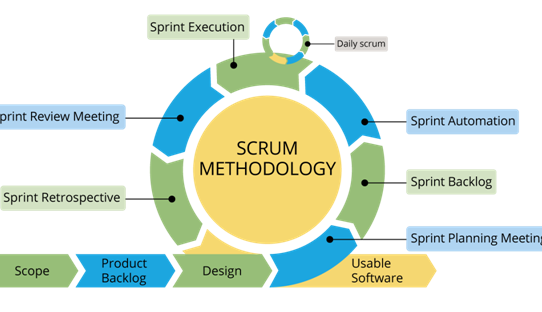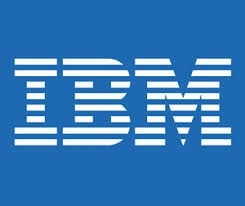Updated June 21, 2023

What is Scrum?
It is an iterative and lightweight framework for dynamically tracking and managing product development. It provides accountability and emphasizes teamwork and iterative progress with three essential pillars, i.e., inspection, transparency, and adaption. Scrum is a framework to manage knowledge work that uses agile methodology. It is like a daily short meeting between team members having three to nine members who divide their work and complete the task within given time iterations called sprints.
The sprint duration is no longer than 1 month, and then the progress is tracked in stand up a meeting called daily scrums.
Understanding
Scrum is easy to understand but hard to follow. It is part of an agile process. It does not follow a traditional methodology which consists of a scrum master, team, and product owner.
Steps:
- The product owner lists tasks to be completed and each task’s time. Tasks are placed in priority order. This part is building the project backlog. This is done by determining what should be done, which tasks are less critical, and those that cannot be completed in a given timeframe and should be considered for the next sprint.
- Using the above step, teams start to work with the highest priority items and try to find how to achieve them.
- The owner and team make daily sprints to check the task’s progress and clarify any changes.
- The sprint is complete only when the product is ready to deliver. People use automation technology to resolve issues of time and cost.
How does Scrum make Working so Easy?
It keeps the team morale high, and developers get the freedom to make decisions. Each sprint produces a module ready for the market, even if the project is ongoing. It gives a clear view of every programmer so there is no confusion or conflict between team members about the assigned work. Projects often provide high ROI (return on investment). Early feedback helps course corrections quickly when it is less costly. Business goals or client requirements can change project goals. It is a Lightweight management process that helps the product owner to keep track of the project.
Top Companies
Below are the different companies of Scrum:
1. Microsoft
Microsoft uses Scrum ban, a combination of Scrum and Kanban. Microsoft created an agile methodology developed for building product features in an iterative way where the scope of iteration does not change. A team of 6-10 engineers does iterations and requires full focus to finish the sprint. The development team then flips the script and uses a Kanban style that helps them to prioritize and fix all emergencies that we’re continuing that team supported.
2. Adobe
Adobe Systems has used Scrum as the most commonly used product development method for several years. Products like Premiere Pro and After Effects, Platform-tools like Adobe Air, and service products like Acrobat Connect use Scrum to effectively deliver excellent quality solutions to customers.
3. IBM
IBM, one of the biggest technology companies, used agile scrum, which played an essential role in improving IBM’s business operations to offer their management software that incorporates agile development called IBM Rational Team Concert. IBM began changes in three areas Process, People, and Tools, and IBM witnessed huge improvements in the end result.
4. Google
Google is the second-biggest tech company in the world. They provide timely updates for its applications in a fast-paced world using agile-based scrum methodology. One big example is how Google improves Android OS. The team releases a set of features to beta testers, and if feedback indicates several bugs, the team rolls back the update.
5. Spotify
Spotify uses an agile environment for its music streaming service and has gained great results. Spotify employees are divided into squads, and each squad is responsible for building a specific app function. With this approach, Spotify assigns respective tasks to each squad without concern for one bad commit that will break the entire streaming platform.
What can you do with Scrum?
Scrum processes are repeated every week; product owners provide a list of a task as short stories. It helps engineers implement the stories in the form of a sprint. Stories are implemented in rank order. You can predict the product timeline and plan for the next sprint if no changes are required in the assigned task.
Advantages of Scrum
- Scrum enables you to create a methodology required for developing complex products. It helps in improving product quality on an immediate basis.
- It enables you to deliver projects faster to customers than the old methodology, as real-time updates are provided when the project is in process.
- It helps to generate the required data to calculate the project’s cost and time and take decisions as and when provided.
- It allows team members to be creative and get to know all the project modules.
- Daily meetings make it possible to measure a programmer’s productivity.
- The cost of managing the project is less as it is quicker to deliver the project.
Required Scrum Skills
Communication is essential to the scrum as your team moves faster, and communications help hold it all together. Timely delivery also requires forecasting the deliverables possible in a sprint. Shielding the team from distractions other than the work related to the sprint.
Scrum Scope
Agile projects have a variable scope that helps the team to incorporate learning and create better products. Agile approaches to scope management are different from traditional methods, where the traditional method documents the complete scope of the project without informing the teams about the product. In contrast, in Scrum, the product owner gathers the data from the team’s knowledge of customer needs.
How will Scrum help you in Career Growth?
A scrum master will begin a career as a mentor, which will help you showcase your knowledge. He/she can move into the product owner role after understanding the product owner’s work with sprint backlogs and helping build and deliver products.
Conclusion
Scrum is a new-age methodology that helps companies to create products dynamically and deliver the part of the product in different sprints with a faster delivery rate.
Recommended Articles
This has been a guide to What is Scrum? Here we discussed the working, scope, advantages, and top companies that implement this technology. You can also go through our other suggested articles to learn more –







